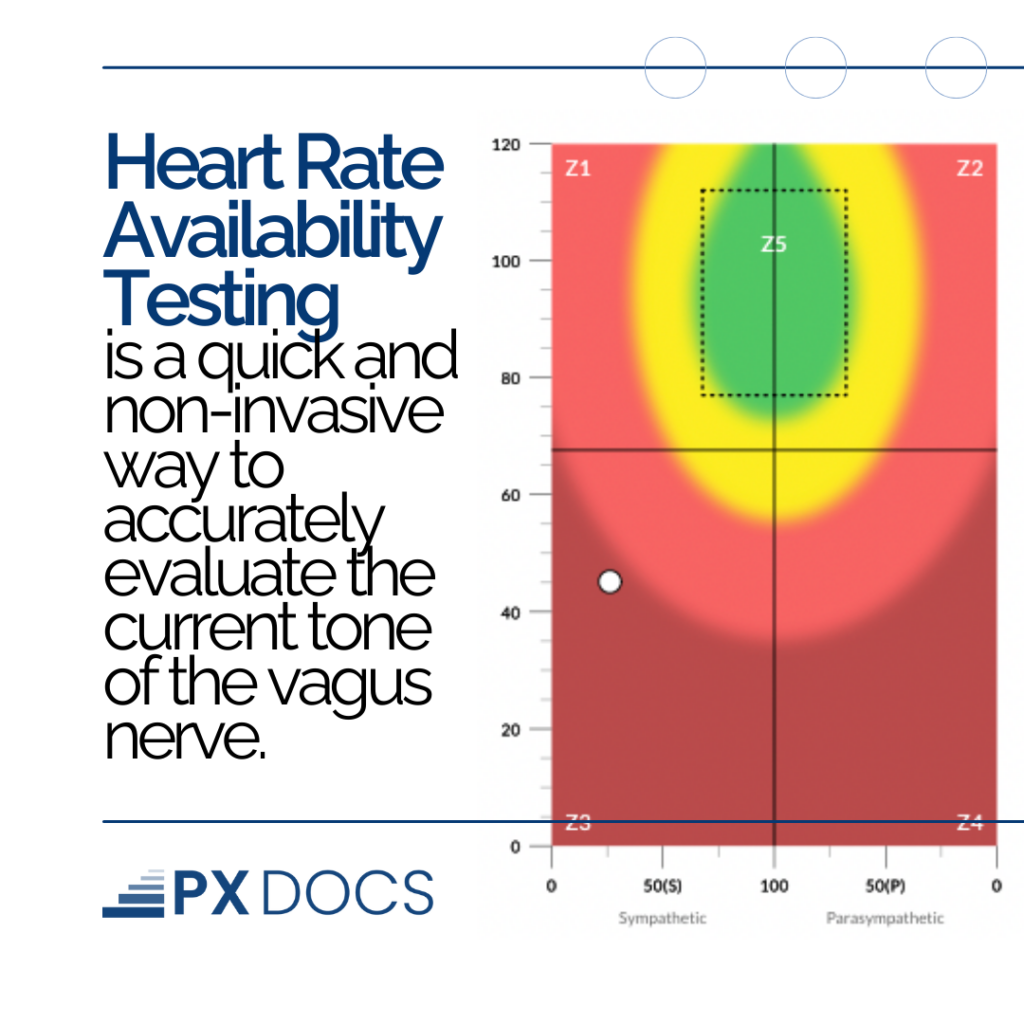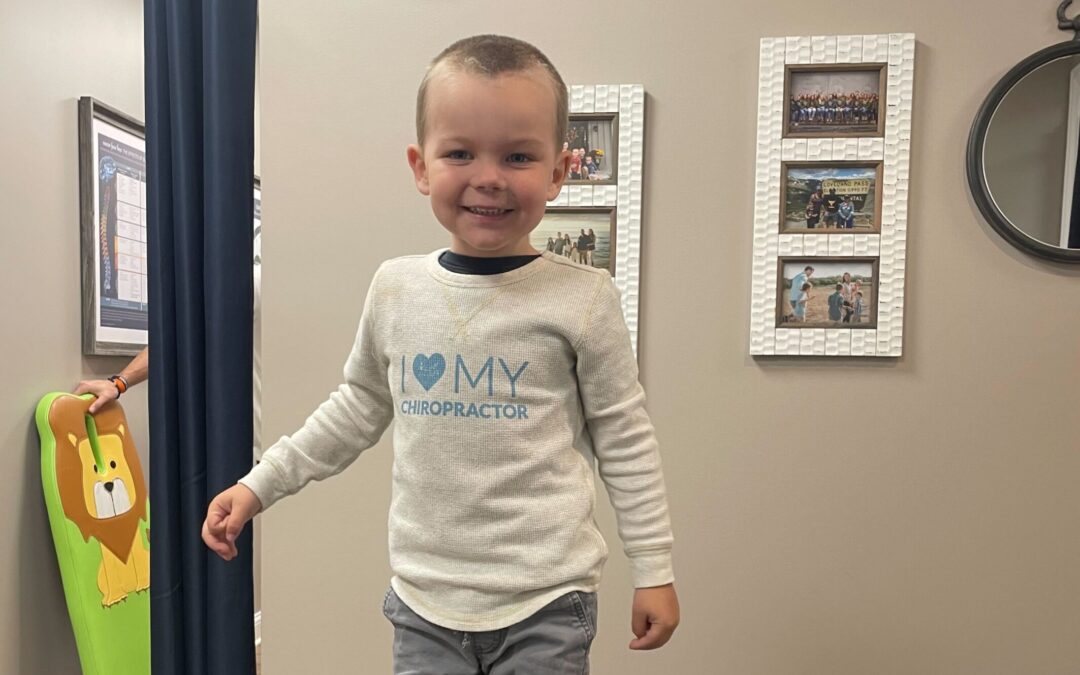Unfortunately, as parents today, we are more than aware of how sick and struggling this current generation of kids are. In fact, more than 40% of school-aged children suffer from at least one chronic health condition, according to the CDC.
Whether it’s asthma, allergies, ADHD, gut issues, or mental health issues, kids face medical problems at staggering rates. Behind the scenes, one overlooked factor binds many childhood ailments together—an underperforming vagus nerve.
You may have heard talk about “hacking” the vagus nerve and “regulating the nervous system” for better health, energy, and recovery from athletes and other health experts. From biohackers to functional medicine docs, it’s a hot topic. But stimulating this critical nervous system channel can do so much more for your child’s well-being than you might realize.
Understanding the Vagus Nerve: The Body’s Superhighway
The vagus nerve serves as the central information highway between the brain and major organs like the heart, lungs, and digestive system. As the longest cranial nerve, it wanders from the brainstem down through the neck, chest, and abdomen.
This diverse anatomical reach enables the vagus nerve to coordinate an array of crucial functions. It manages the activation of the parasympathetic “rest and digest” mode within the autonomic nervous system. This facilitates relaxation, food digestion, immune regulation, controlled inflammation, and various other regenerative processes.
Conversely, the vagus nerve tempers the “fight or flight” sympathetic nervous system activity. This helps counter the body’s tendency to get “stuck” in a hype-driven state of stress response. As a result, the vagus nerve holds responsibility for modulating heart rate variability (HRV), breathing rate, gut motility, and much more—all pivotal to health.
So, in basic terms, think of the vagus nerve as a complex highway system connecting the brain to vital points throughout the body. When functioning properly, it keeps traffic moving smoothly to nourish optimal wellness. But when damaged, it sets the stage for pile-ups, accidents, and slowdowns we experience as illness.
Why Vagus Nerve Performance Matters
Beyond coordinating physical processes, robust vagus nerve activity strongly influences children’s behavioral and emotional well-being. Research reveals clear ties between vagus dysfunction and conditions like anxiety, OCD, ADHD, and depression, likely stemming from impaired nervous system communication.
Likewise, studies connect poor vagal tone to inflammation-driven disorders from diabetes to arthritis as a result of the nerve’s immune system involvement. The vagus nerve, with its many connections, influences almost every part of our health. Yet its significance gets largely glossed over in pediatric care, even when a child’s symptoms directly indicate poor function.
By recognizing the overlooked impact of the vagus nerve, though, you open the door to solutions that can help resolve an array of symptoms at their root cause—impaired nervous system function. Read on to discover how a few small, supportive steps can optimize its performance.
How to Stimulate the Vagus Nerve
Over the last 15+ years, I’ve seen many parents work hard to help their children learn various lifestyle measures that help stimulate the vagus nerve and work to calm their child’s anxiety and emotional dysregulation. Things like meditation, deep breathing, and even yoga all work with this in mind, and thankfully, in today’s world, many parents and other professionals are working hard to teach their children these wonderful health hacks.
However, time and again, we see that they are simply not enough to get an overwhelmed, anxious, or angry child to calm down and stay out of trouble. In these cases and many others, parents have turned to something that is both more passive and more potent to help stimulate their child’s vagus nerve and the body’s calming and regulating effects – neurologically-focused chiropractic adjustments.
These kinds of specific chiropractic adjustments applied to regions of subluxation (or stuck stress) obstructing neurological signaling pathways offer a potent way to stimulate the vagus nerve. Our network of neurologically-focused PX Docs specializes in the precise and gentle techniques proven to reboot nervous system function. So, for optimal vagus nerve recalibration, contact a PX Doc to explore how customized care can complement your lifestyle measures.
Once Neurologically-Focused Chiropractic Care helps get your child unstuck from an overactive sympathetic nervous system and neurological imbalance, then various other lifestyle measures and natural ways to stimulate the vagus nerve can start to become more effective vagus nerve exercises include:
- Deep Diaphragmatic Breathing: Slow, deep breaths using the diaphragm activate the vagus nerve by signaling receptors that connect to the brainstem.
- Humming, Chanting, and Gargling: Vocal vibrations stimulate vagus branches in the throat and neck tied to the larynx and esophagus.
- Cold Therapy: Brief cold exposure on the face, neck, or hands triggers the mammalian dive reflex connected to the vagus.
- Massage and Acupressure: Gentle massage of the outer ear or carotid arteries in the neck has vagal effects.
- Yoga and Movement: Poses, stretches, exercises, tapping, breathing, inversion, massage, chanting, and relaxation boost vagal tone.
- Meditation: Research confirms meditation enhances heart rate variability and vagal signaling. Any calming, present focus helps trigger the response.
Keep in mind that if you’ve tried some or all of those to help regulate and calm your child’s nervous system but to no avail, to truly “hack” your child’s nervous system and see lasting improvements, seeing a qualified PX Docs Neurologically-Focused Chiropractor trained in detecting and correcting neurological dysfunction is a great next step for your family.
The “Perfect Storm” Sabotaging Children’s Nervous Systems
Traditional medicine often overlooks the foundational role neurological health plays in generating illness and wellness—especially in children. But the reality hides in plain sight: a stressed and distorted nervous system underpins immune disturbances, digestive issues, chronic inflammation, and more. Vagus nerve dysfunction sits at the heart of this complex web.
We call the interplay and accumulation between factors that rewire children’s still-developing neurological capacity the “Perfect Storm.” It often starts prenatally, with maternal stress hormones crossing the placenta and initiating immune activation in the fetus. High cortisol effectively gives the baby a stressed physiological imprint to start life with.
Then the birth process itself poses another hurdle, as interventions or complicated labor majorly stimulate the sympathetic nervous system, spark inflammation, and commonly lead to misalignment and tension of the delicate upper neck and brainstem region, which happen to house the vagus nerve.
Postnatally, anything that keeps a child’s physiology stuck in “threat” mode strains the nervous system further. Whether from gut disturbances due to antibiotics, nutrient-poor diets, childhood bumps and falls, or simply an absence of rest, stressful inputs accumulate. Eventually, the system has no reserve left to regulate itself, much less to handle new exposures. All of these “Perfect Storm” elements eventually add up to an overstressed and imbalanced autonomic nervous system, a condition known as dysautonomia.
Without addressing these root causes, children’s bodies struggle to navigate the cumulative impacts. The inflammation, immune weakness, and organ distress that follow stem directly from the downstream effects of impaired nervous system communication – namely, vagus nerve dysfunction. Yet pediatricians frequently overlook this crucial element, relegating chronic symptoms as “normal childhood phases” rather than warning signs warranting a closer look.
Fortunately, advanced solutions now exist to accurately evaluate your child’s vagus nerve performance while also providing tailored supportive care. This brings hope for resolving rather than perpetually “managing” symptoms with medication after medication.
Assessing Vagus Nerve Performance with Innovative Testing
As Neurologically-Focused Pediatric Chiropractors, we recognize the overlooked yet pivotal role nervous system health plays in childhood development and well-being. That’s why our network of PX Docs anchors care plans around gently restoring and maintaining balanced neurological communication—especially vagus nerve function.
Heart Rate Variability (HRV) testing is a quick and non-invasive way to accurately evaluate the current tone of the vagus nerve. This innovative scan tracks heart rhythm patterns to capture detailed data on the autonomic nervous system. The readings obtained from the test can help our doctors identify the presence of vagus dysfunction or other related autonomic disorders.
In addition to this, HRV scans also provide valuable information, such as the severity of neurological dysfunction and the specific regions of interference that are disrupting normal signaling. These scans offer metrics like stress resilience, adaptability, and relaxation response that can serve as “neuro-vitals” for creating personalized improvement plans.
Our PX Docs address the root cause of your child’s health condition and restore function using safe, non-invasive methods, namely INSiGHT Scans and Neuro-Tonal Adjustments, that focus on restoration rather than prescription drugs.

The PX Docs Approach: Addressing Subluxation and Dysautonomia
What makes the PX Docs approach unique is our advanced focus on accurately detecting and correcting subluxation patterns and dysautonomia, specifically through Neurologically-Focused Chiropractic Care. As discussed, these issues—representing overburdened nervous system regions—commonly start from birth interventions and stack through repetitive stress.
Gentle chiropractic adjustments address sites of subluxation where slight misalignments or distortion interfere with neurological signaling. Our doctors undergo in-depth training to master precise and specialized techniques tailored to gently meet each child’s needs based on their scans and case presentations.
These restoration-based treatments eliminate interference, reduce excessive neurological tension, restore nervous system regulation, and effectively reboot nervous system coordination – including vagus nerve function.
In particular, the adjustments recalibrate the nerves, turning down the overactivity of the “fight or flight” sympathetic regions. They also bolster parasympathetic outflow to reengage the body’s restorative digestive and anti-inflammatory capacities. Ongoing care continues to support emerging nerve pathways and overall neurodevelopment.
Over weeks to months, children commonly begin to notice improved sleep quality, better digestion, a stronger immune response, and calm moods as their nervous systems recalibrate. Brain connectivity rebounds as well, empowering motor skills, language development, and learning capability to progress smoothly. Parents also report kids seem to better tolerate previously aggravating exposures to foods, chemicals, and other triggers.
By directly addressing root dysfunction, the adjustments help children’s bodies self-correct versus dealing with constantly reducing symptoms through medications. This means lasting resolution instead of temporary band-aids for families stuck on the chronic illness merry-go-round.
Support Your Child’s Future by Caring for the Vagus Nerve
A properly functioning vagus nerve is pivotal for children’s health and the essential development of neurological pathways that impact their lifetime capacity for resilience. Unfortunately, the cascade of stressors comprising the “Perfect Storm” places an increasing burden upon young nervous systems, contributing to impairment that feeds an epidemic of chronic illness.
The good news is innovative solutions now exist to accurately evaluate your child’s vagus nerve performance while also providing tailored supportive care instead of defaulting to pharmaceuticals presenting their health risks. You also have the power to manually stimulate tone improvements through simple nerve-nourishing lifestyle habits.
If you suspect that your child’s symptoms may be due to neurological dysfunction, please contact the PX Docs directory to get in touch with one of our PX Docs. You can then witness the amazing results of gentle nervous system recalibration as your child’s body remembers how to operate at its full potential!





